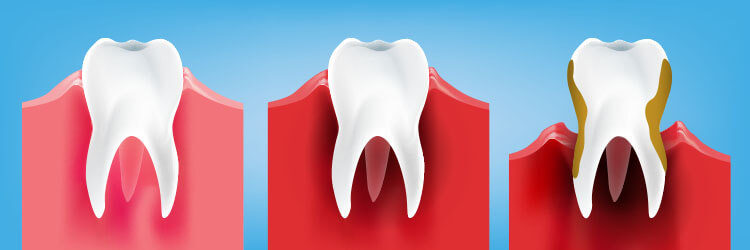Definition
Gum disease is an inflammation of the gum line. It can affect the bone that supports and surrounds your teeth. There are three different stages of gum disease, gingivitis, periodontitis, and advanced periodontitis.
Signs & Symptoms
- Loose teeth
- Bad breath or taste in the mouth
- Receding gums (moved away from the tooth)
- Visible puss surrounding gums and teeth
- Swollen, red, tender or bleeding gums
Types Of Gum Disease
Gingivitis
Gingivitis is the most common gum disease. It involves inflammation of the gingiva caused by plaque along the gum line. Symptoms include bleeding, swollen, and red gums. Hormone changes from pregnancy or puberty can also intensify gum disease. Dentists may call this puberty or pregnancy gingivitis.
Periodontitis
This is the second-most common gum disease. It is caused by bacterial plaque and loss of bone as well. This stage can be treated and prevented with six-month professional cleaning and exams. Signs of periodontitis, like gingivitis, include red and swollen gums, and bleeding. Gum pockets around teeth will most likely occur with perio disease. The opening around each tooth allows bacteria and tartar to reach deep parts under the gum line. Bone loss will occur with a deepening of the pocket eventually leading to tooth loss.
Visit your dental hygienist and dentist for regular cleanings and exams to prevent gum disease and further problems. The longer you leave the problem untreated the worse and more expensive it can get. Give us a call today to schedule your cleaning and exam.


